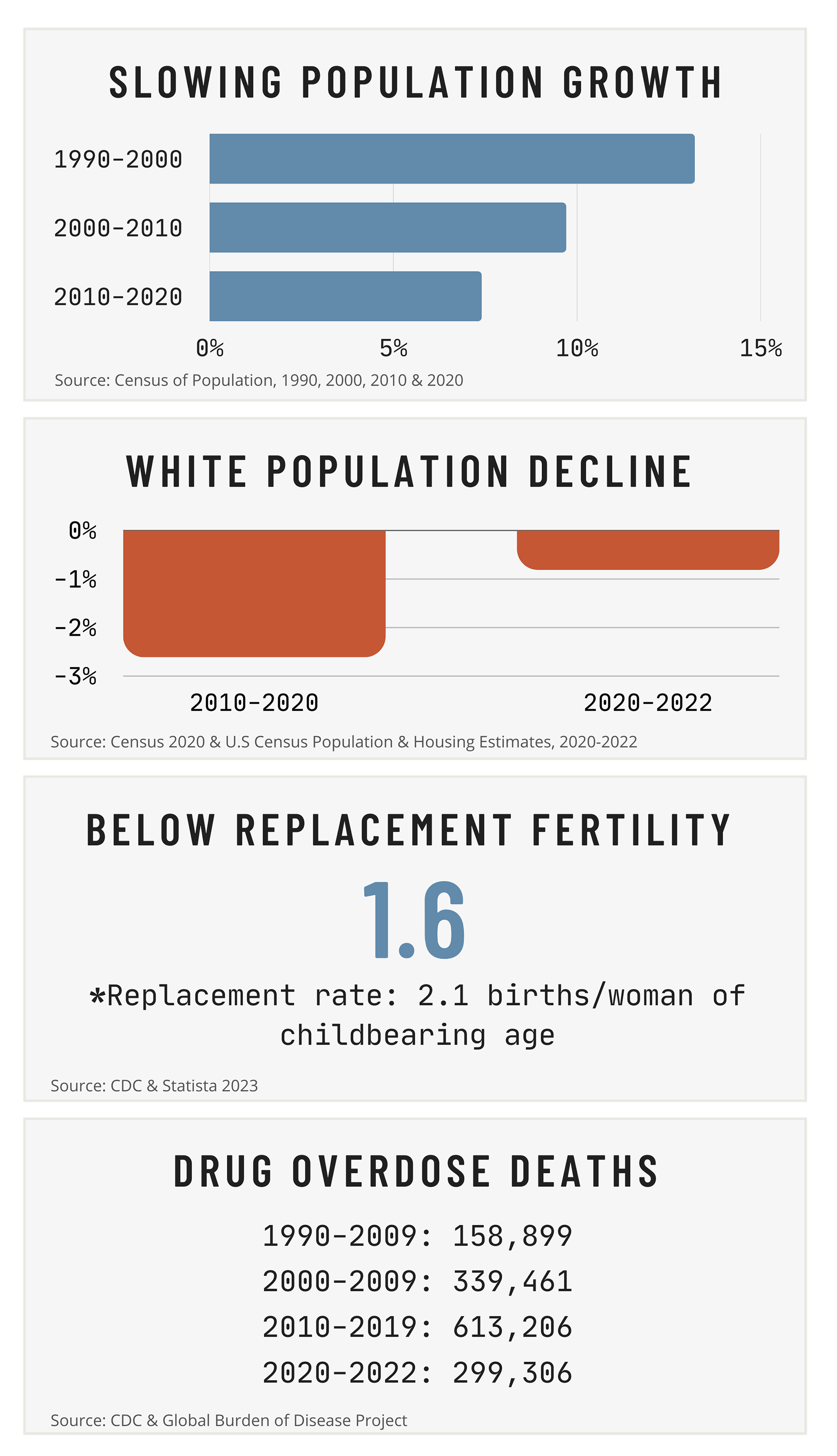Major Workforce Challenges

One obstacle to understanding the state of the U.S. economy – in addition to the economic and political fluctuations of recent years – is the dramatic shift in the demographics of the American populace. An aging workforce, issues that affect specific populations, and a lower fertility rate all contribute to the changes we observe in labor markets, as well as within the broader economy. Disentangling these complex structural factors is no easy task, especially when many of them have been building slowly over decades.
Jim Johnson, William R. Kenan Jr. Distinguished Professor of Strategy and Entrepreneurship at UNC Kenan-Flagler Business School and director of the Urban Investment Strategies Center, tackles many of these questions in his work and research. His topics of inquiry include business demography, inequality, job creation, community development and entrepreneurial approaches to poverty alleviation.
We asked Johnson a few questions on the trends he’s most cognizant of and the issues they present – with an eye toward potential solutions from the public sector, private sector and society writ large.
U.S. Male Population and Labor Force Change by Age, 2025- 2021

What trends should workers and employees be aware of in 2023?

Jim Johnson: Many people are saying that the high rates of inflation and recent layoffs represent the end of the “great resignation”; I think this is an overstatement. It may have slowed down the great resignation – particularly for certain segments of the workforce that had previously been fairly well insulated against layoffs, such as tech workers. However, even as many firms return to the office, there are three major groups that are facing serious challenges with working in person.
- Women with young children. We’re in a major childcare crisis, with 45% of the U.S. population in a childcare desert – meaning that these areas lack an appropriate number of childcare slots for the number of children that live there.
- People with serious mental and physical health challenges, for whom returning to work in person can represent all kinds of challenges.
- People who have been displaced by rising housing or rental prices as a function of the pandemic-induced migration and explosive growth in certain areas (including our own Research Triangle) and are forced to live far from their place of work. These “super commuters” get pushed out of their communities but still have to work in areas where they cannot afford to live. Getting into the office on a regular basis is incredibly hard for these workers given the distance they now have to travel, especially with increased traffic congestion and rising fuel prices.
We’re also observing a significant change in workplace culture that businesses are still navigating. One component of this is the newer workers – and especially Generation Z – who expect their employer to meet a certain set of cultural and ethical standards that we haven’t seen in previous generations. They’re looking to work at places that align with their values. And, on the other side, firms are also facing more pressure from consumers, with the recent backlash against Bud Light serving as a perfect example. Ultimately, corporations are in between a rock and a hard place when it comes to the culture wars, in that they are increasingly expected to take a political stance.
You’ve talked about “gale force demographic wind gusts” in the past. What does this mean, and how do you see these factors playing into the labor market in 2023?

Jim Johnson: In 2021, I identified seven powerful demographic trends – including slowing population growth, white population decline and reduced life expectancies – that are likely to disrupt business and commerce in the years ahead. Their power is sufficiently disruptive to refer to them as “gale forces.”
One of these seven major factors that’s being overlooked is the surge in deaths of despair, particularly among prime working-age males. Factors such as the opioid crisis and mental health challenges have contributed to significant demographic depression in that population and sharply lowered workforce participation rates. And, even for those in the workforce, many of these workers demonstrate reduced productivity owing to these premature disabilities and deaths. As a society, we need to devote a laser-like focus on these social determinants of health – one’s ZIP code and what resources are lacking where they live.
In addition, the workforce is aging sharply. We’re going to continue to see significant structural changes, since younger demographics are small and growing smaller. The U.S. fertility rate has been below the replacement level (2.1 children per woman of childbearing age) since the mid-2000s. This will create significant issues for Social Security, which relies on a healthy workforce to fund the older generations after they retire.
Together, all these factors point to a declining workforce. However, there is an important piece of the puzzle that we could come together on to address this issue. We need to have an immigration policy that provides pathways to living and working in the United States. This would provide a large pool of talent for the labor market as a whole and allow people to develop their talents to benefit the broader human race.
What role do you see for the educational system in creating and fostering a skilled workforce?

Jim Johnson: As a society, we’re at a crucial inflection point of thinking about education in a way that equips people to be successful in a highly politicized and polarized world. I think a particular challenge for educational institutions (like business schools) is how they can teach students to become fluent conversationalists with a variety of different people – even those who might not share their background or views.
This is a question we’re working to address in our classes at Kenan-Flagler! In a class I co-teach, we’ve been experimenting with what we call a “courageous conversation” model, in which we approach politically charged topics and randomly assign students to defend either side. The point isn’t to change people’s minds, but to foster a cohort of fully informed young people who can parse through information and resist the potential bias of their own political or personal views. In a highly technological and polarized environment, firms and societies are going to be looking for leaders who can navigate turbulent cultural waters and genuinely connect with other people. The more educational institutions can do to create people with these skills, the better.
Powerful Demographic Trends and Their Economic Effects